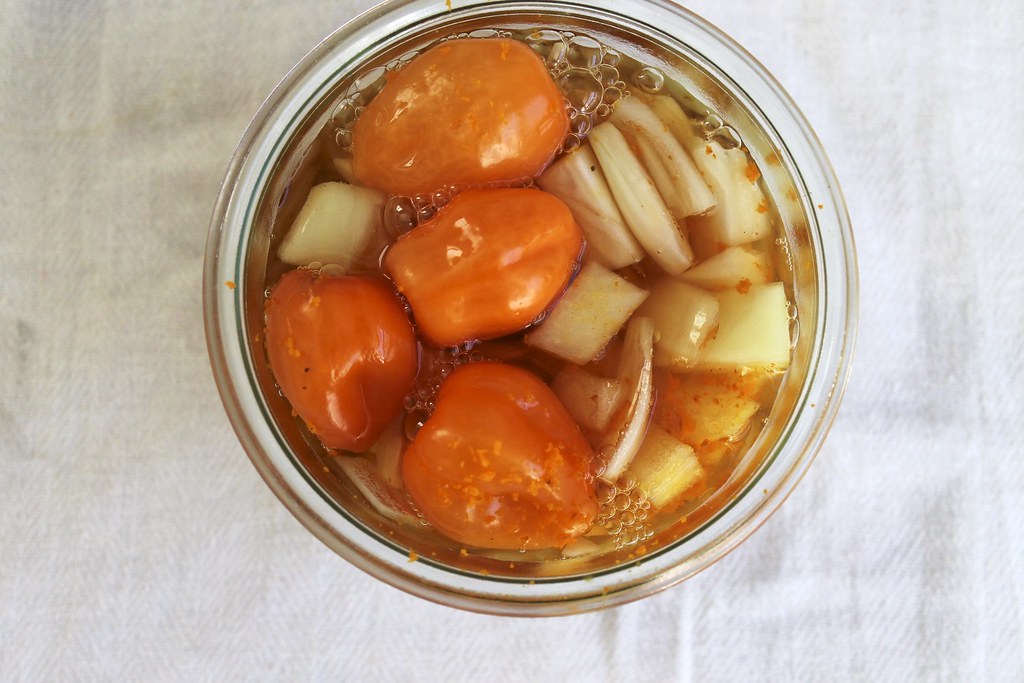With “social distancing” and “self-isolation” dominating the current vernacular, people all over the world are gearing up to stay inside. And while these extreme measures have certainly disrupted our bustling way of life, this quarantine period offers many of us a rare opportunity to rest and redefine approaches to health and well-being. If you’re searching for a meaningful way to fill your sudden excess of time (as well as your pantry), consider experimenting with fermentation, an age-old food preservation technique that supports gut health and boosts immune function. From sauerkraut to kombucha, the possibilities are endless—but if wellness tops your list of concerns, fire cider is the way to go.
Fortifying (Fermented) Fire Cider
Vinegar-based brews have been central to folk medicine for centuries, but “fire cider” is not the time-worn tonic that many believe it to be. A potent concoction of spices, aromatic herbs, root vegetables, and apple cider vinegar, today’s version was pioneered by herbalist Rosemary Gladstar in the 1970s, and it’s been a staple of many holistic treatments ever since. This simple—yet super customizable—formula was designed to combat issues like congestion and inflammation, for daily use or at the onset of infection. But, with a vinegar base, it’s not technically fermented, and you don’t get the abundant digestive perks brought on by beneficial lactic-acid-producing bacteria.
The following recipe is teeming with anti-inflammatory and antiviral properties, and it’s been edited to offer two options: one with a traditional vinegar base and another with a saltwater fermentation brine. Tweak it to suit your needs and tastes—add some turmeric root or echinacea for an extra immunity boost, jalapeno and cinnamon for warmth, or pineapple for a tangy twist.
- Raw unpasteurized apple cider vinegar (or the saltwater base)
- ½ cup grated fresh horseradish root
- ½ cup fresh chopped onion
- ¼ cup raw chopped garlic
- ¼ cup grated ginger
- 1 orange, peeled and sliced
- 1 lemon, peeled and sliced
- Chopped fresh (or dried) cayenne pepper to taste—it should be hot, but not too hot!

For fermentation saltwater base:
- 3 cups filtered or distilled water
- 1 tbsp pink Himalayan sea salt
Place contents in a clean half-gallon canning jar and cover with apple cider vinegar (make sure the vinegar is two inches above the contents). The vinegar should contain traces of the “mother” culture, a mass of micro-organisms that helps kick-start the fermentation process. Cover jar with parchment paper or a clean cloth, then close tightly with a lid.
Blend salt and water together by shaking vigorously in a jar. Then place ingredients in a sterilized half-gallon Fido jar (or a fermentation vessel with an airlock lid), with the smallest pieces at the bottom. Pour brine solution over contents, leaving one to two inches of space. Finally, place a weight of some kind (like a plastic bag containing water) over the contents to keep them submerged. Close the jar.
Place jar in a dark area at room temperature for three to four weeks. Lightly shake or tap the jar every few days to help carbon dioxide escape.
After three to four weeks, strain the herbs and set the liquid aside.
Transfer the liquid into sterilized glass bottles, then store in the refrigerator. The cider will keep for several months. Enjoy it as a shot to jolt you awake in the morning, or mixed into your tea. Add warm honey to taste.
________
Never miss a story. Sign up for NUVO’s weekly newsletter here.





